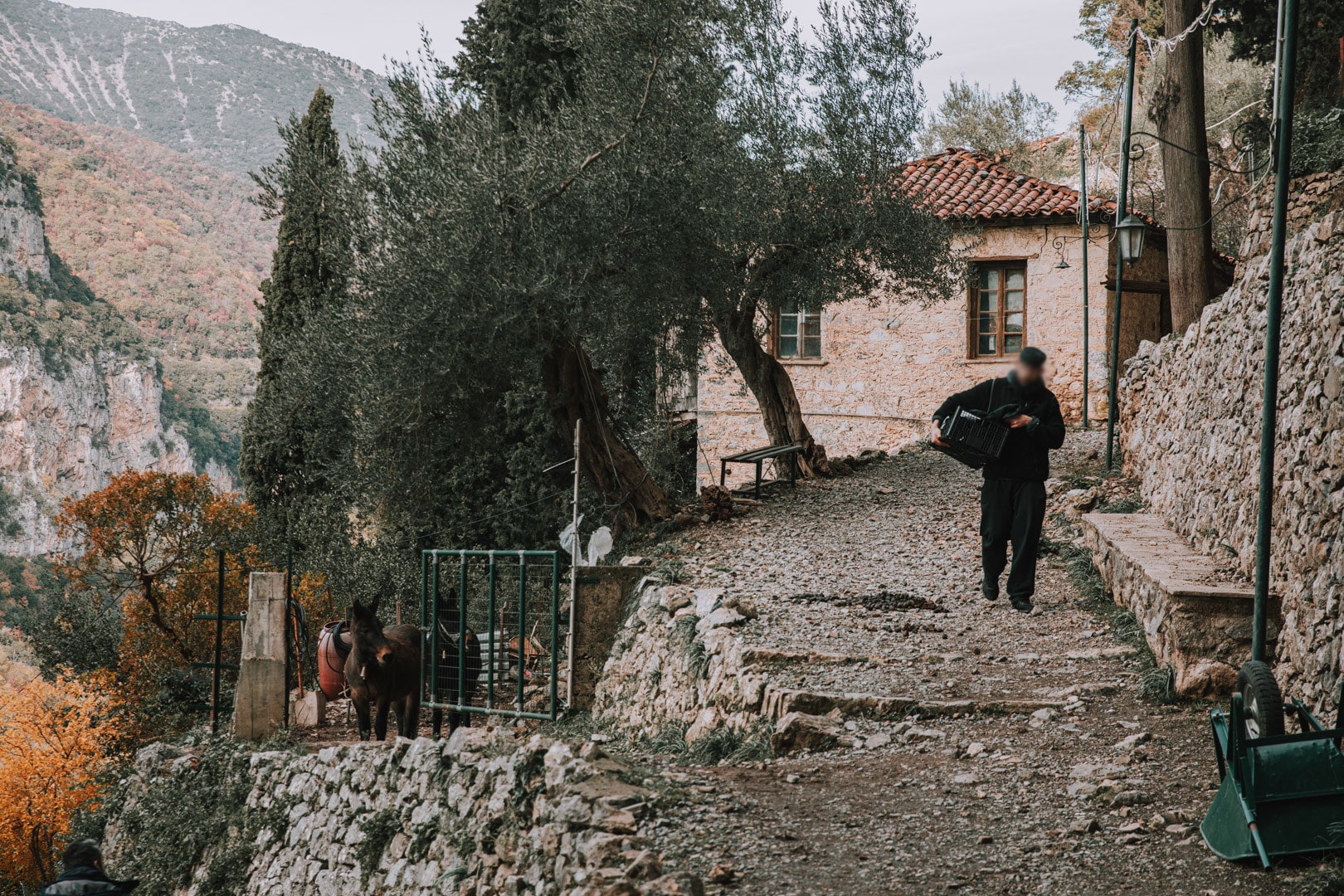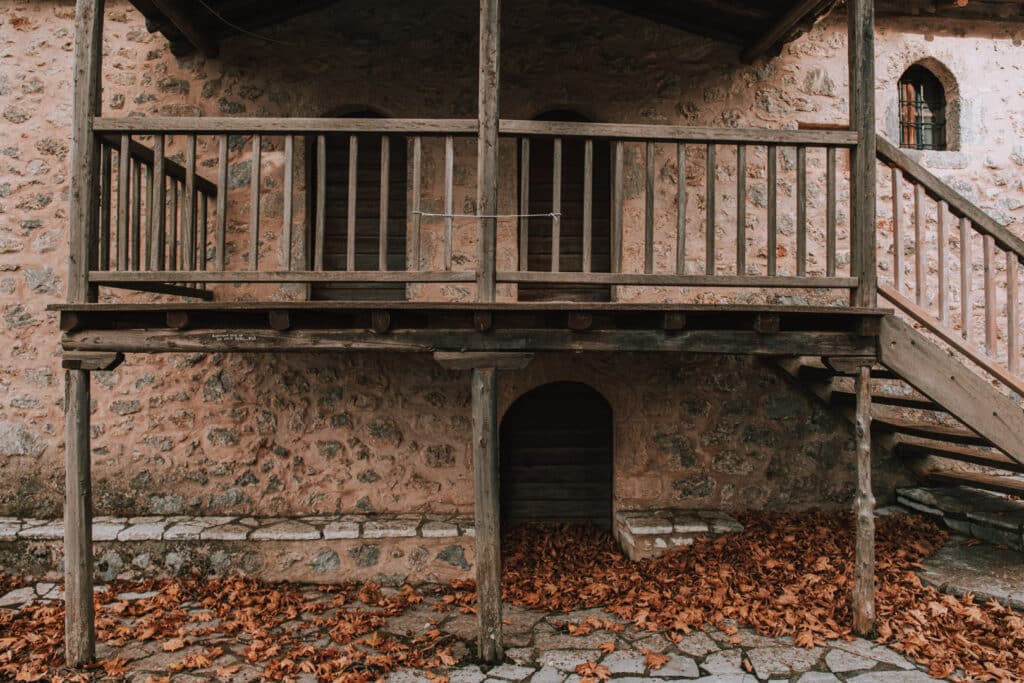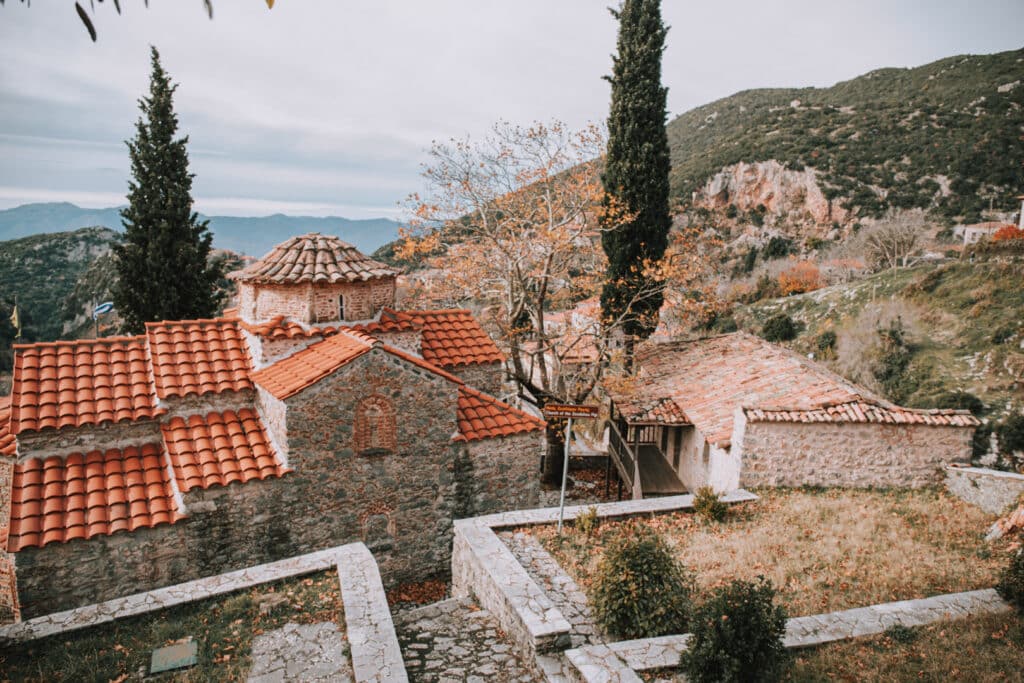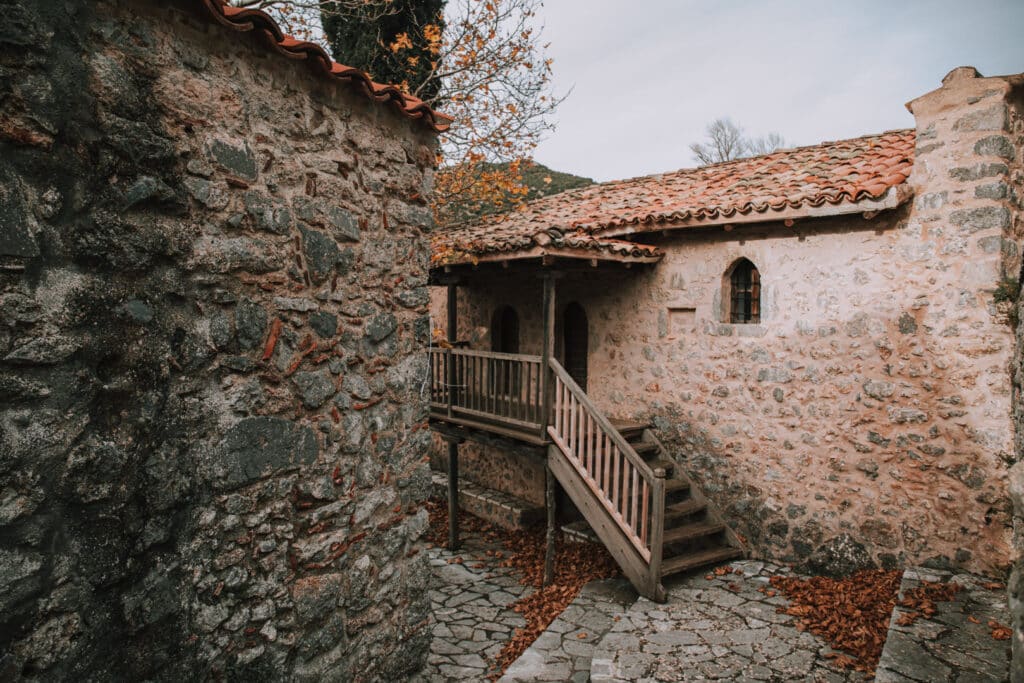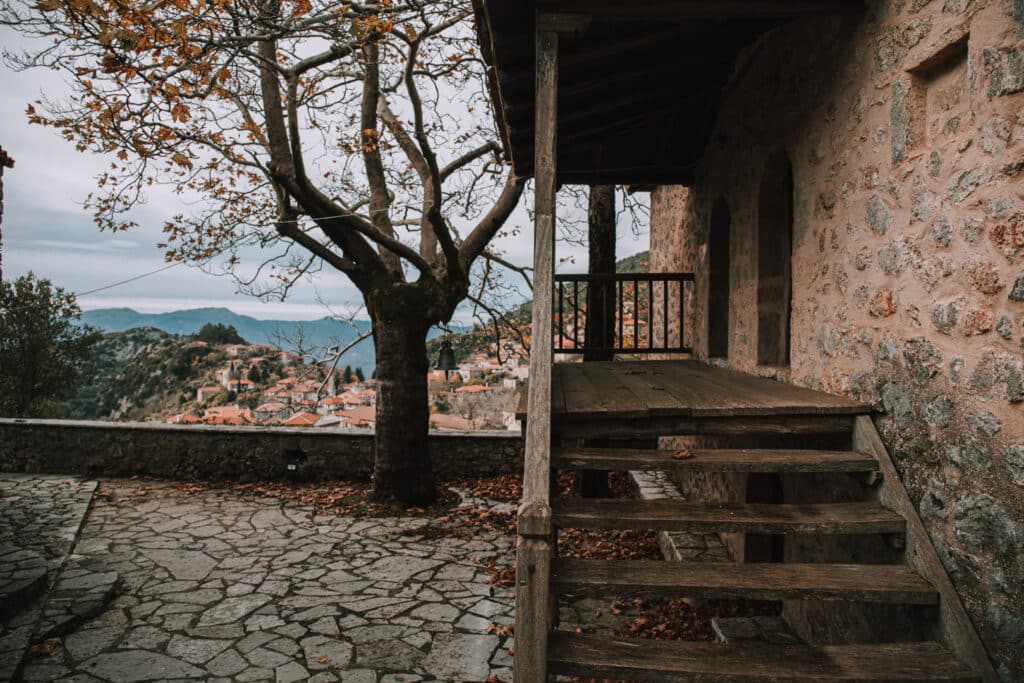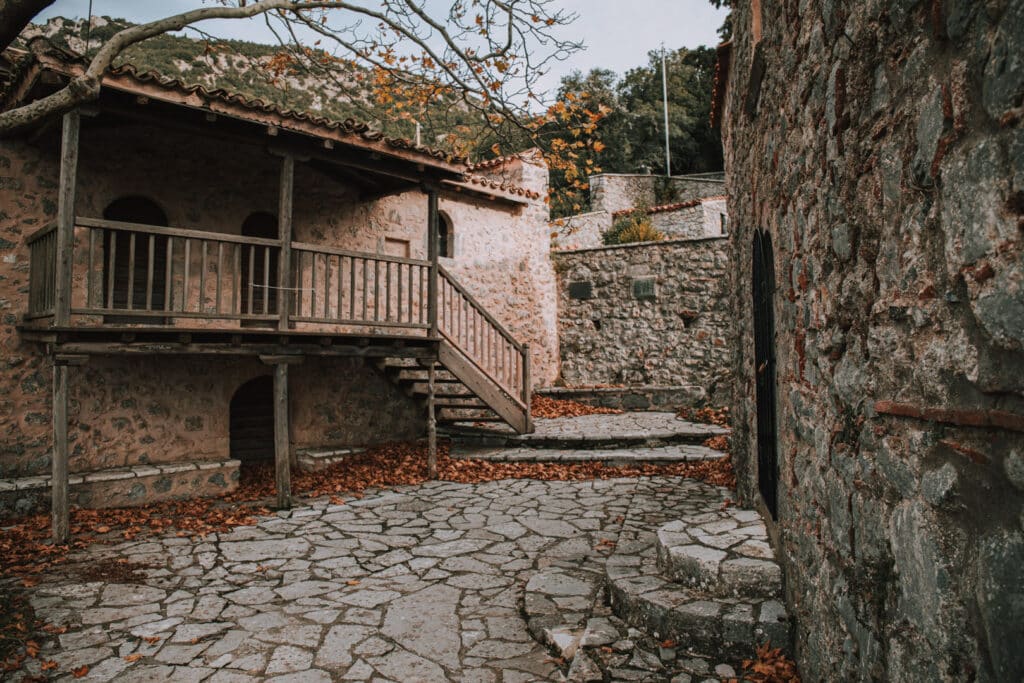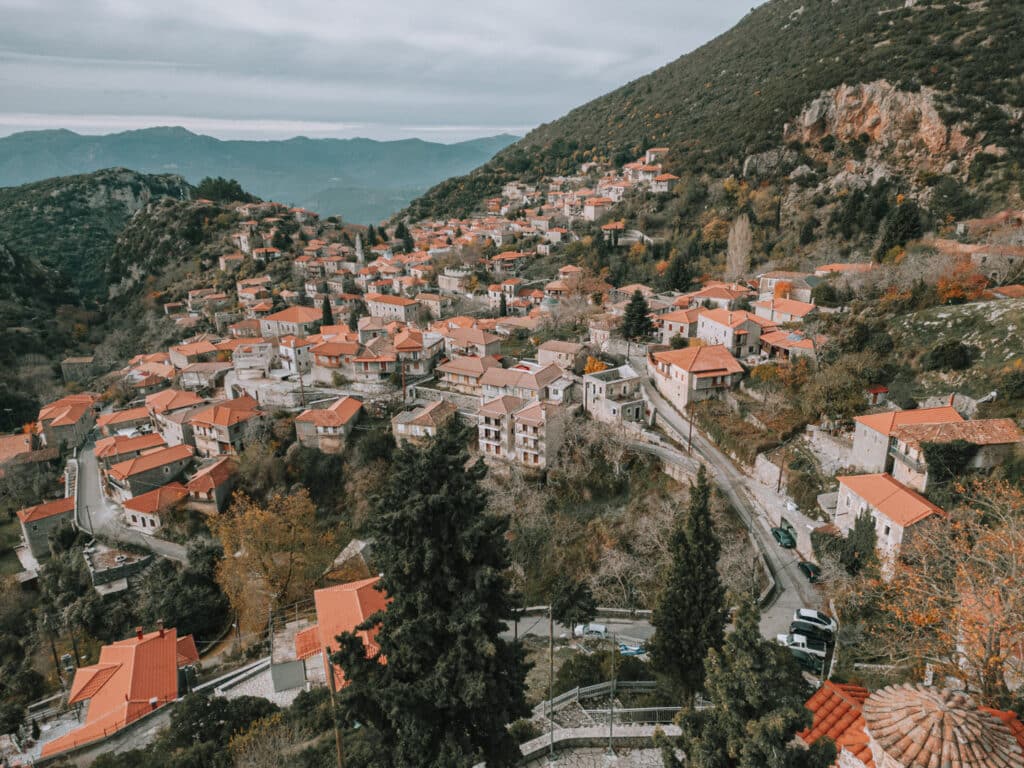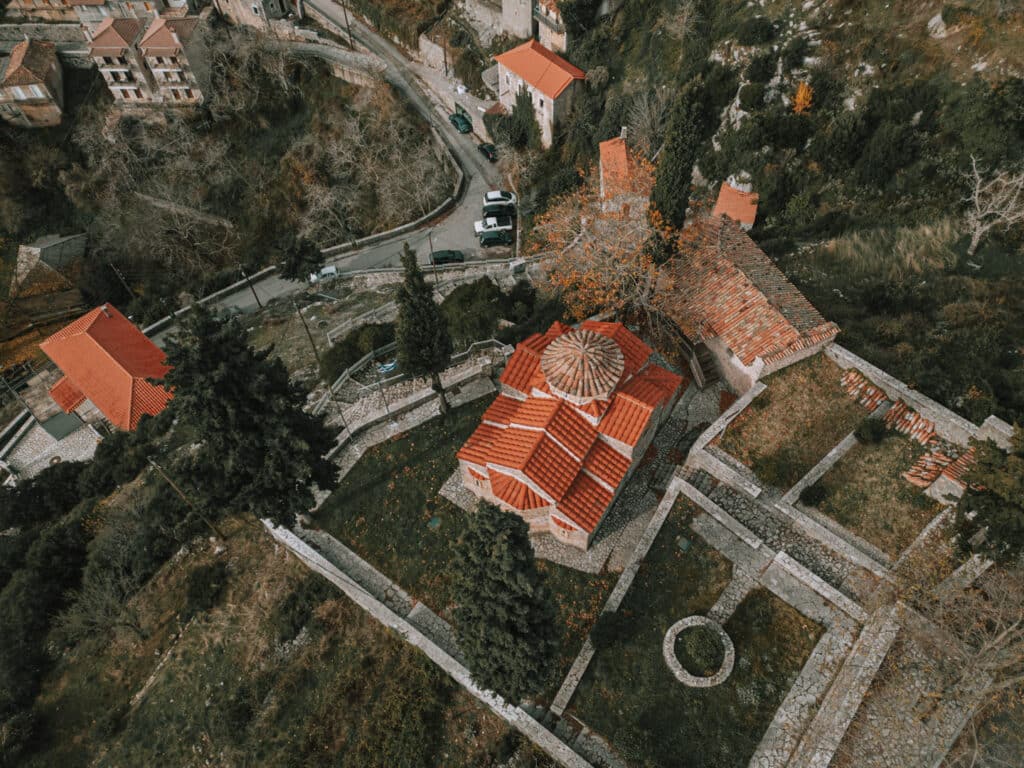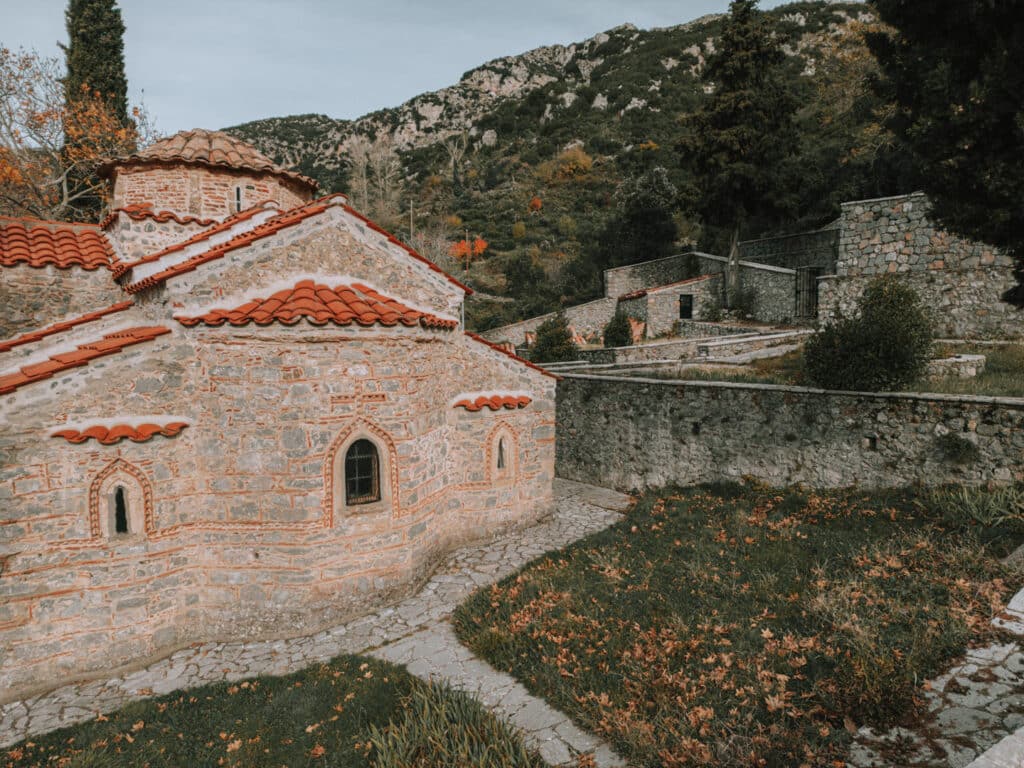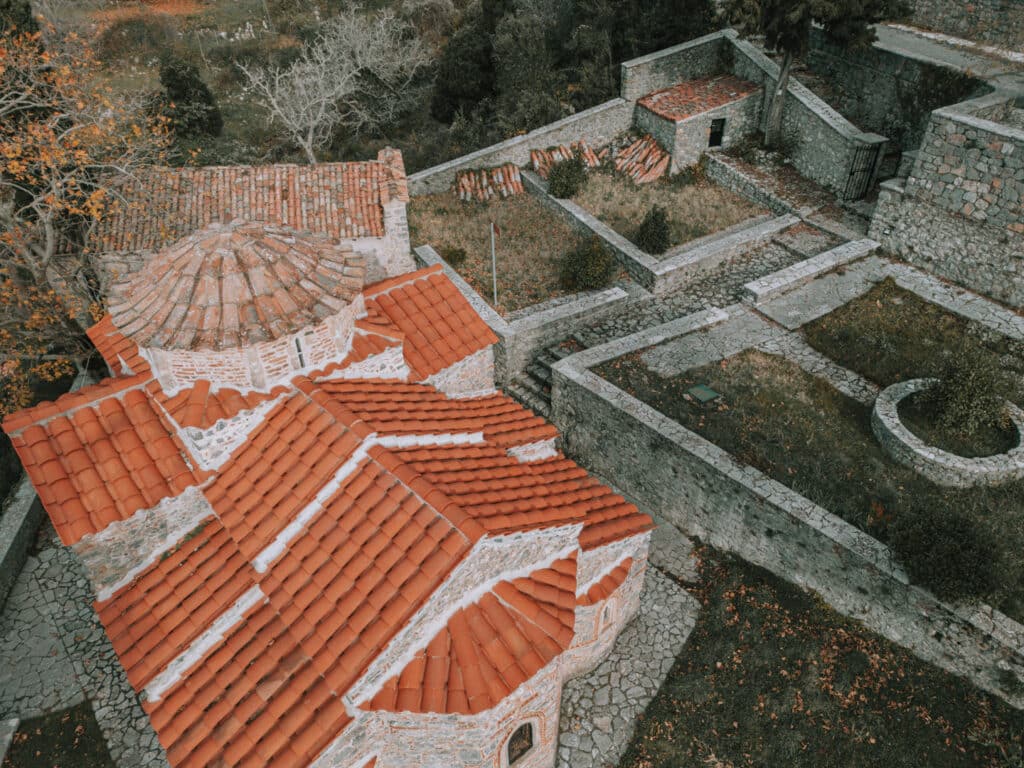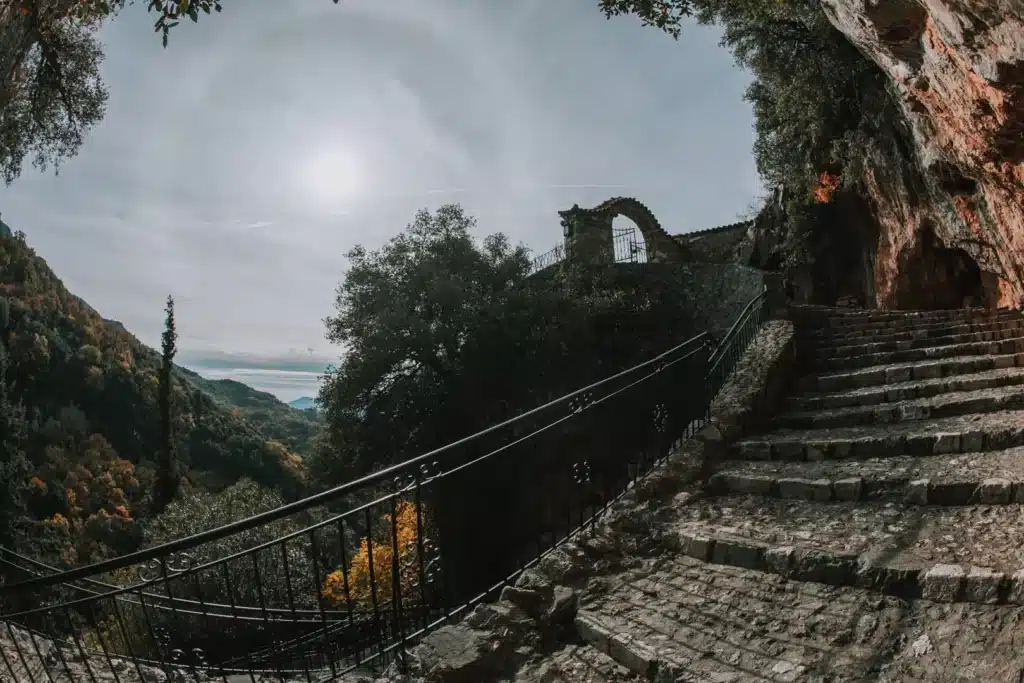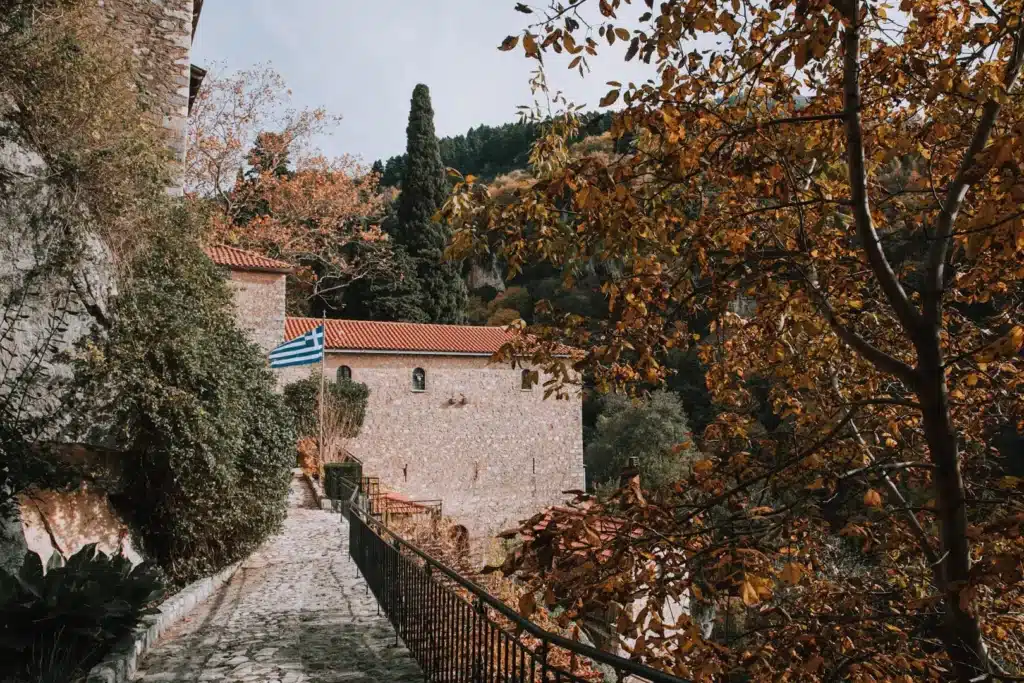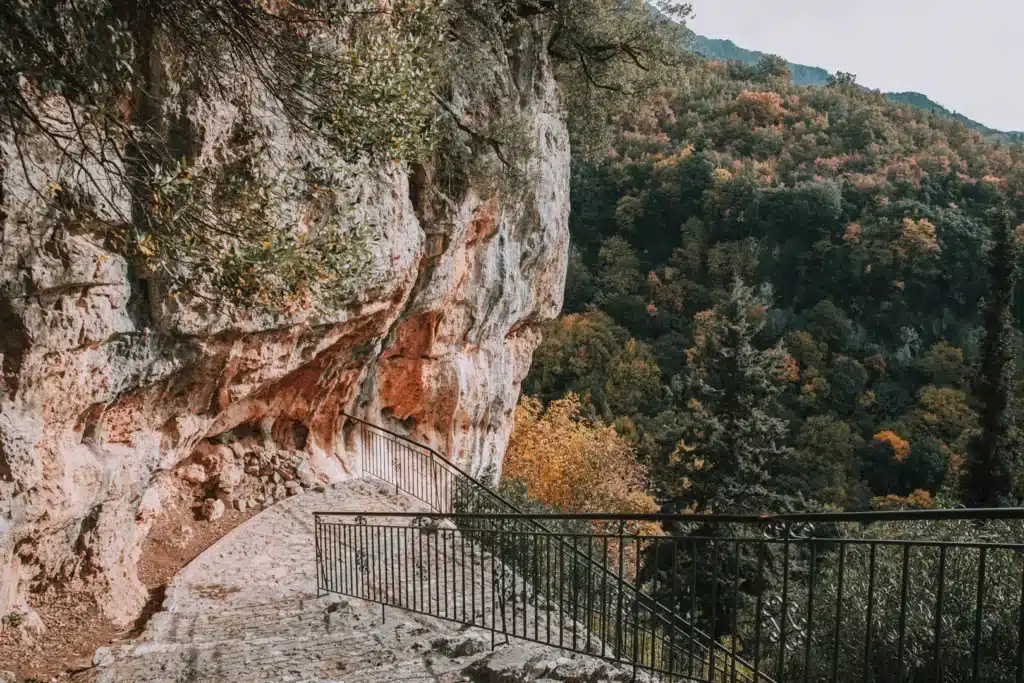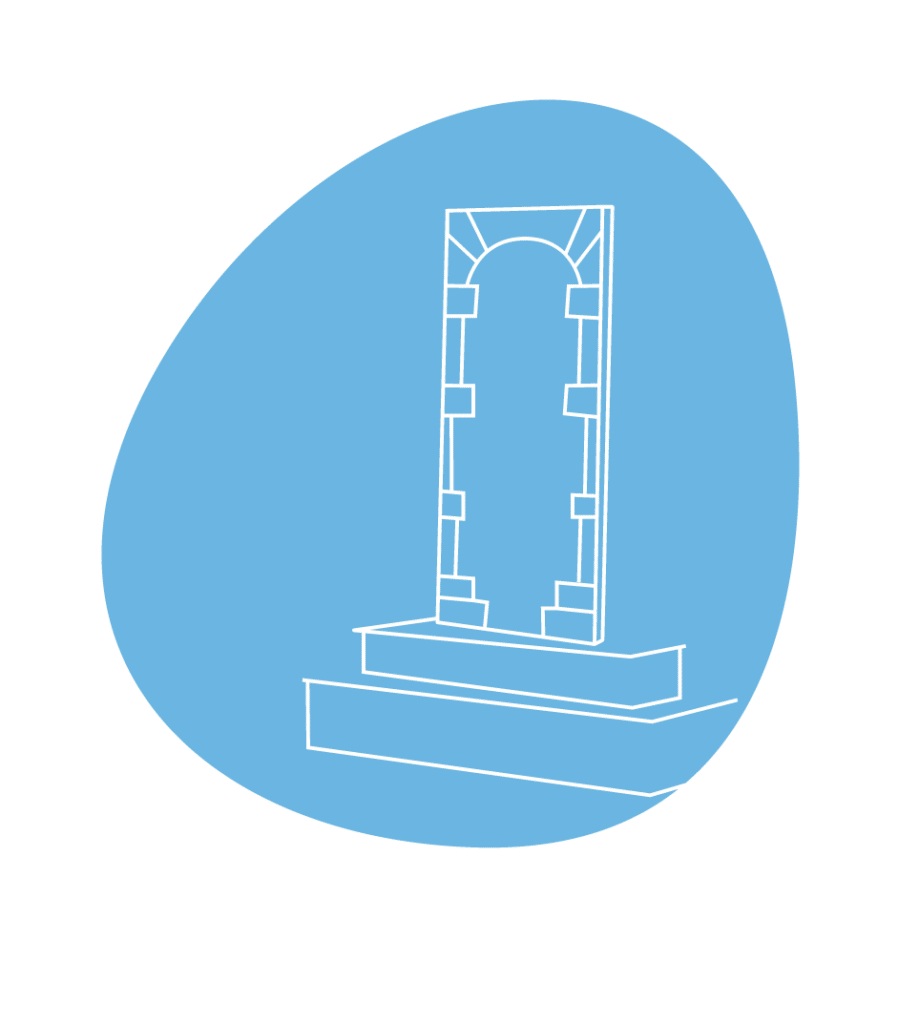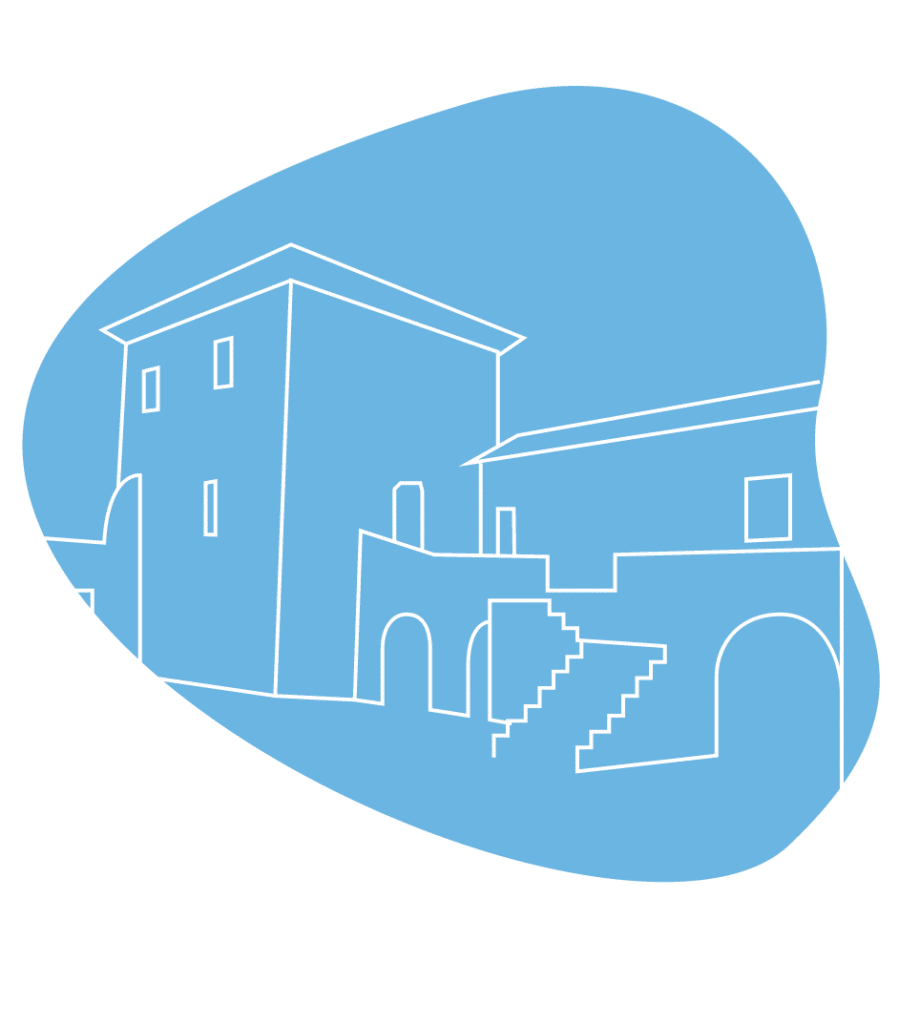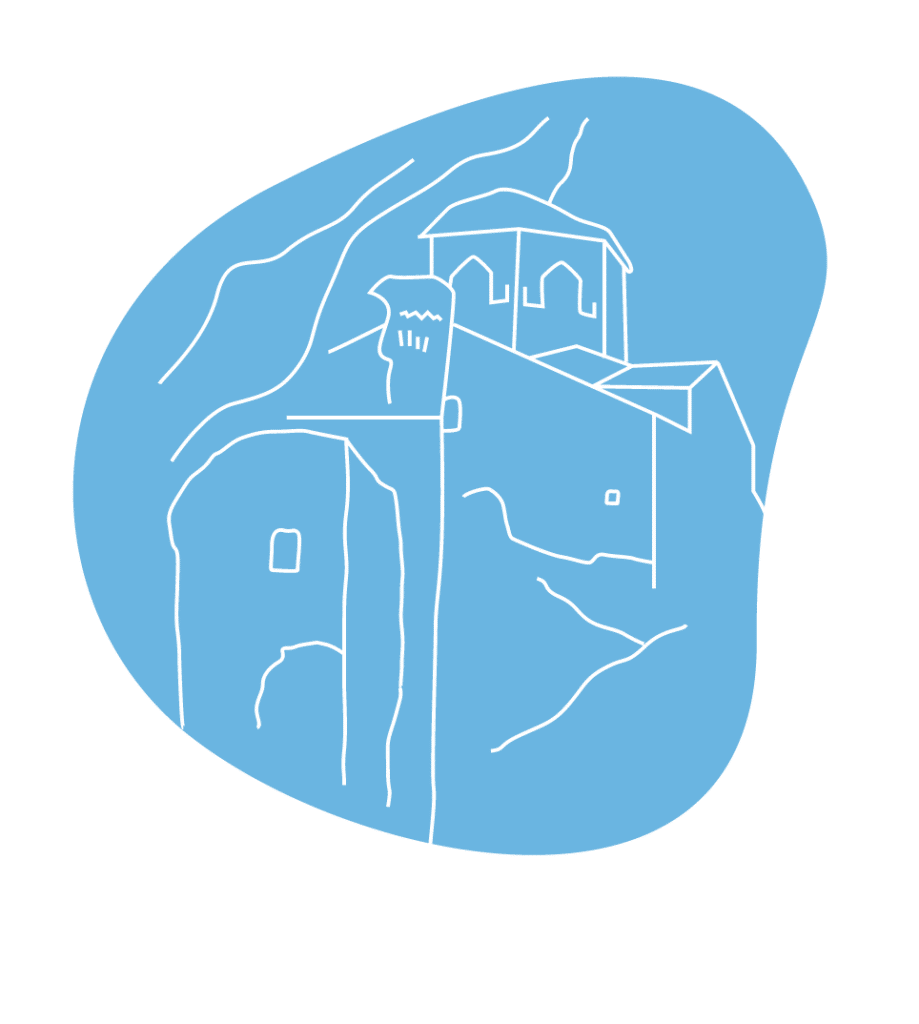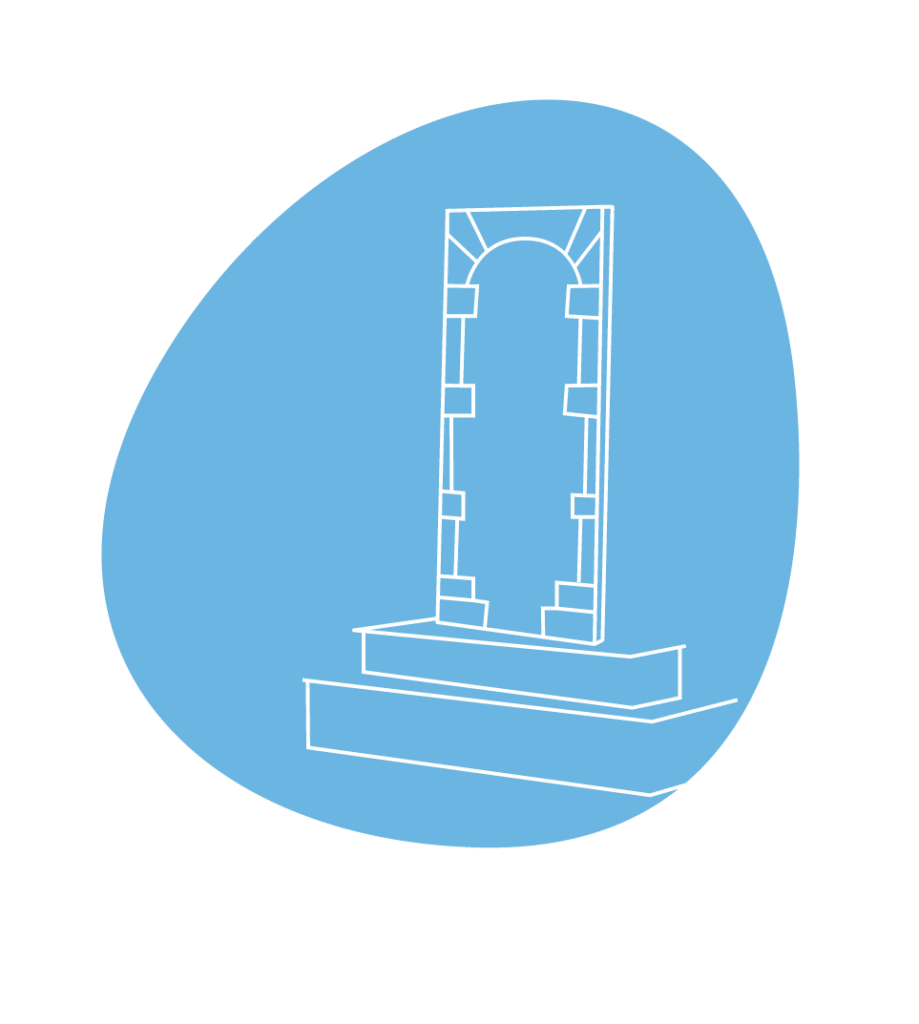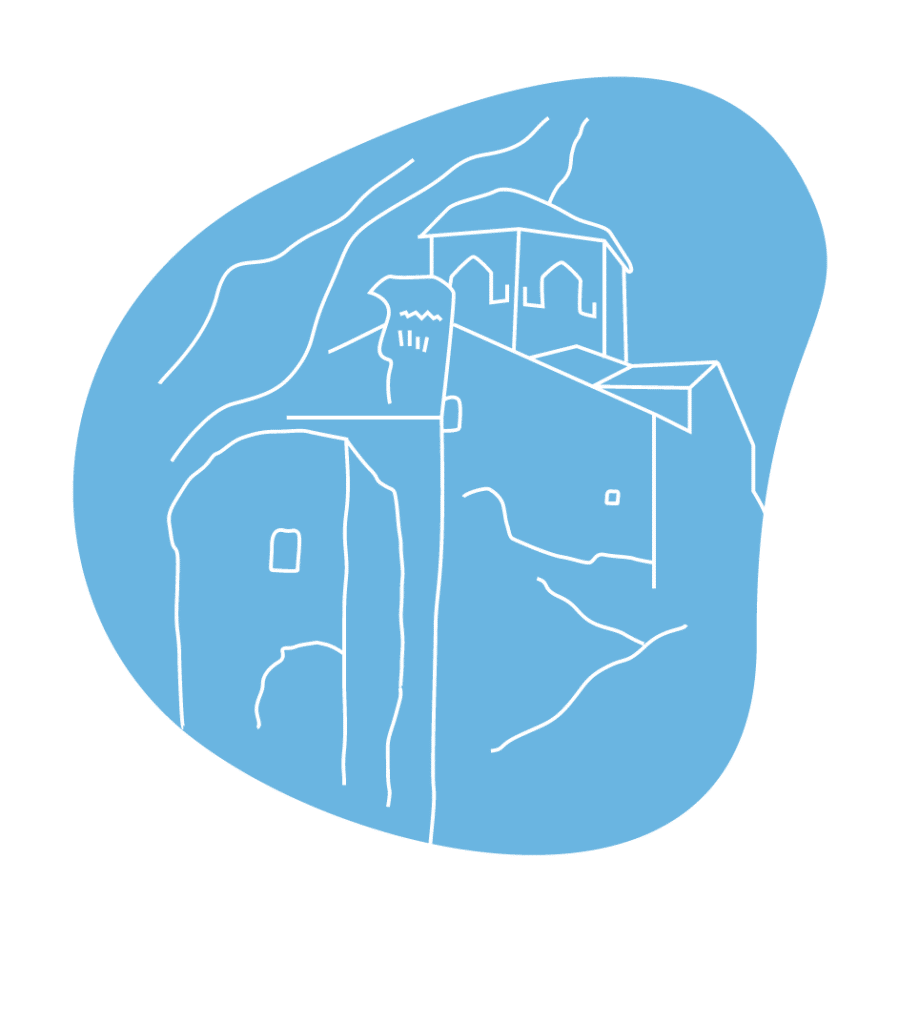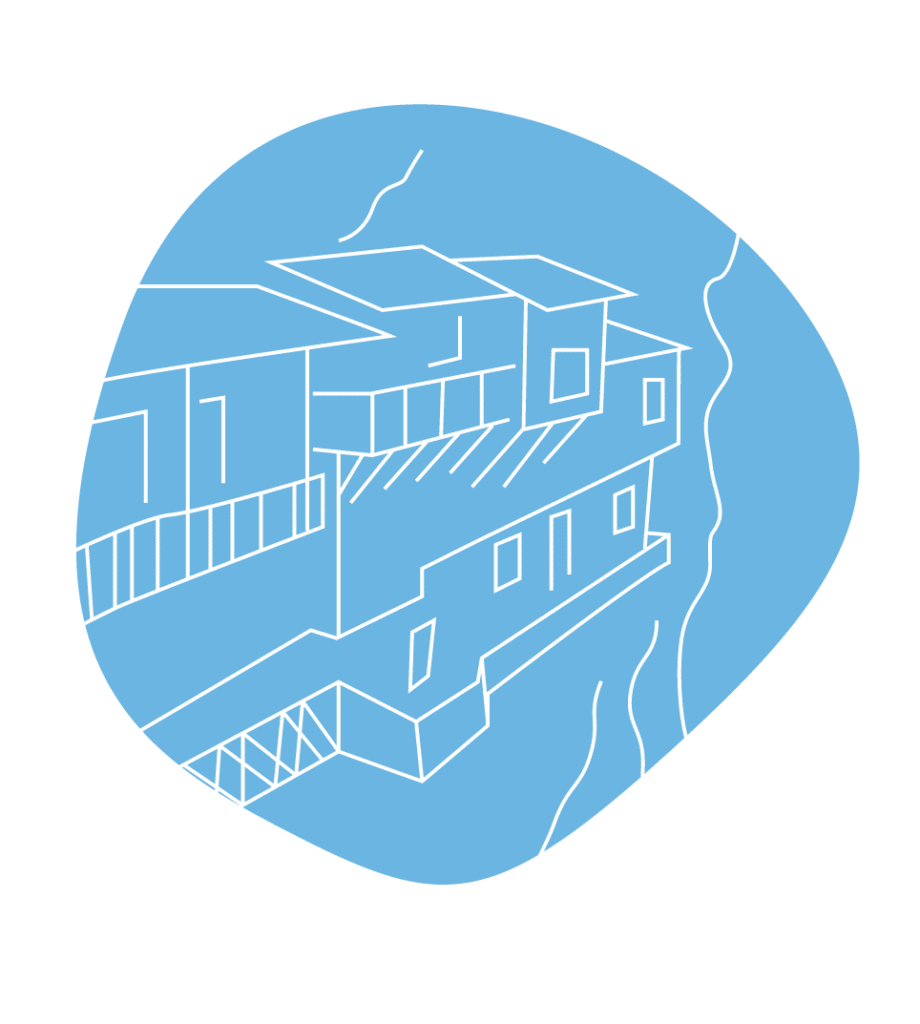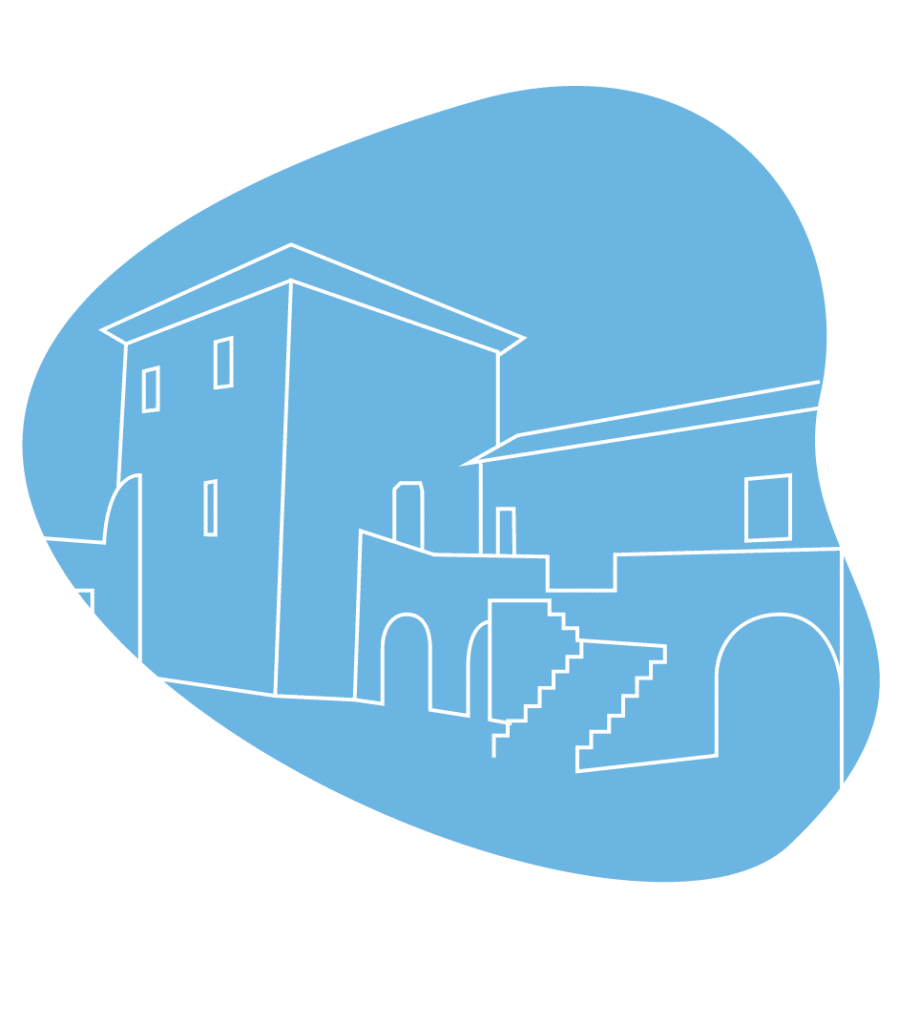Built at the base of a steep vertical rock, about 200 meters from the bank of the Lousios river, the Holy Monastery of Saint John the Baptist, with its rich history and contribution to the struggle of the Greeks for liberation, inspires awe in every visitor.
The balcony of the Monastery offers a beautiful view of the gorge, as well as tranquility due to the flowing waters of the river.
During the years of the revolution, the Monastery was a stronghold of the main commanders of the Revolution of 1821, such as Theodoros Kolokotronis and Dimitrios Plapoutas, while at its central gate, the marks from the battles that took place during the Orlov revolt are still visible today.
It is one of the most important monasteries in the area, which is still in operation today. Built at the base of a steep and wild rock, about 200 meters from the bank of the river Lousios, it was founded in the 12th century, according to tradition, initially as a hermitage and later as an organized monastery. It is about 11 km from Dimitsana and about 85 km from Tripoli.
Initially, in the place of the caves – hermitages, cells were built that were supported on the rock with beams, as well as a protective wall, which we also find in other monasteries in the area, for security reasons. Next to the Monastery, during the period 1909-1911, the church of Saint Athanasios was built, in which the relics of Saint Athanasios of Christianoupolis, patron of Gortynia, are kept.
The Monastery experienced great prosperity during the years of Turkish rule, while at the same time it was a refuge for the residents of the surrounding areas, during periods of Turkish raids and persecution of Greeks, a resupply point, as well as a space for treating the wounded.
During the revolution of 1821, the Monastery of Saint John the Baptist was the base for Kolokotronis, Plapoutas and other well-known warlords, while its monks took part in battles, such as the one of Doliana, offering, at the same time, silver and gold utensils for the needs of the fight.
The entrance to the monastery is through a historic wooden door with iron lining. The stairs lead to an inner courtyard, dominated by the rock in which the single room katholikon of the Monastery, dedicated to Saint John the Baptist, with well-preserved frescoes, is incorporated.
Like other monasteries in the area, it was closed by the royal decree of 1834, but reopened after four years. Today, it functions as a men’s monastery and is a place of pilgrimage and a point of attraction for the entire region.
To reach the Monastery today, one has access from two points. The main highway reaches the small Church of the Transfiguration. An 800m path starts from there, which leads to the Monastery that emerges almost meteorically from the steep rock. The second route is longer, but it is an ideal option for hiking. The visitor may start from the Monastery of the Philosopher and reach the Monastery of Saint John the Baptist by crossing the Lousios river, through specially designed paths.
Διαδρομες
Ιερά Μονή Ζωοδόχου Πηγής Στεμνίτσας
Το γραφικό και ιστορικό χωριό της Δημητσάνας αποτελεί βασικό θεματοφύλακα ιστορικών και λαογραφικών παραδόσεων του ελληνικού γένους. Στη βιβλιοθήκη της, εκτός από τα εμπλουτισμένα με 35.000 τόμους βιβλίων ράφια.
Αρχοντικό των Δεληγιανναίων
Το οίκημα δεσπόζει στον Πάνω Μαχαλά του ιστορικού χωριού Λαγκάδια, το οποίο, εκτός από σημαντικούς χτίστες, χάρισε στην Ελλάδα την περίφημη οικογένεια των Δεληγιανναίων, προεστών του Μοριά πριν από την Επανάσταση. Από την οικογένεια Δεληγιάννη προήλθαν και δύο Πρωθυπουργοί στα χρόνια μετά την απελευθέρωση.
Dimitsana Historic Public Library
The picturesque and historical village of Dimitsana is a key depository of historical and folklore traditions of the Greek nation. In its library, apart from the shelves enriched with 35,000 volumes of books, the visitor can also admire important relics and memorabilia from various moments of the glorious past.













